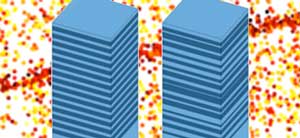
Friday, February 8, 2019
Scientists marry gas-trapping framework to light-powered nanocatalysts
Nanopore research hits a nerve

Researchers discover new method to quantify graphene at the cellular level

Scientists image conducting edges in a promising 2-D material

Turning a porous material's color on and off with acid

Cryo-force spectroscopy reveals the mechanical properties of DNA components

Sound and light trapped by disorder

Subscribe to:
Posts (Atom)
